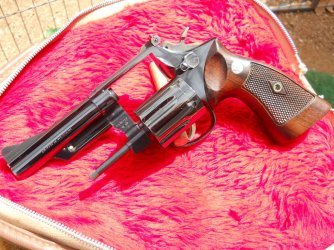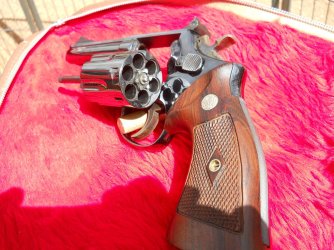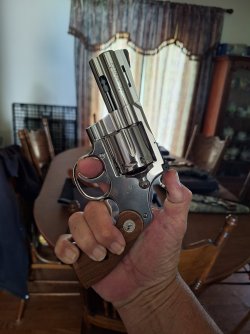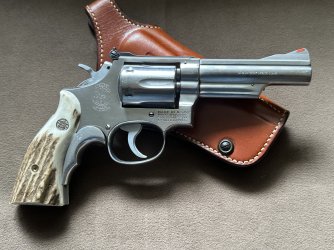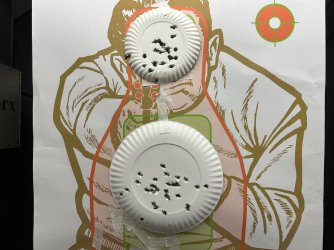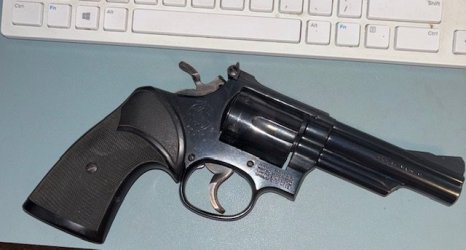I contend in more than 3-1/2 decades of shooting and handloading and working with over a dozen different handgun-specific calibers, my favorite chambering of all must be the .357 Magnum. And when it comes to revolvers, there's nothing I love more than a pre-lock, pre-MIM, pre-frame mount firing pin S&W revolver.
For me, these are personal facts. Another fact? I do not enjoy the full-spec .357 Magnum cartridge in any K-frame revolver. I simply don't, that's just me. I don't personally believe it is as simple as being "recoil averse" because I will spend half a range day sending .460 Magnum at 200-400 yard steel plates, flinging 240gr XTP-Mag bullets out the muzzle of my 460XVR at 2,000 fps and never cry about the recoil.
I love the .357 Magnum cartridge from my N-frames. Don't like it from my K-frames.
And while this "K-frame magnum fragility" discussion happens a lot, I don't tire of hearing/reading the discussion and listening to the opinions and experiences of others.
With all that said... at long last, my point:
It does not seem to get mentioned that history suggests S&W did not intend the K-frame to be a platform for this cartridge. History suggests that S&W was pushed (pushed HARD!) in to the development of the Combat Magnum. And as mentioned, the .357 Magnum ammo available in 1956 or 1957 was different than the ammo that soon followed in the age of the light bullet, high velocity path that "working and social" ammo would take through the next many decades.
Someone posted above that they have a 19 dash something from 1981 and they've fed it a personal lifetime of 125's and their gun is perfect. All good. Can't say you're wrong.
I would challenge you to detail the countless thousands of balls-to-the-wall light bullet fodder it has digested if/when you sell it. Go ahead and add all your data in fantastic detail to the description of the revolver you're selling, I'm certain it will open up a wild bidding war with the number of interested parties rivaling the countless volume of full-test light bullet ammo you've sent through it.
Right -- I get it. You'll never sell it. That's cool, I'm simply trying to make a point.

